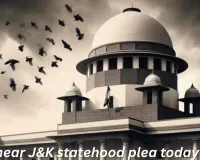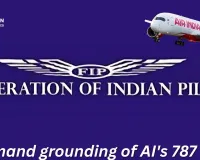Delhi’s Air Pollution Hits 5-Year High Post-Diwali; AQI Crosses 400, Minister Blames Punjab for Stubble Burning
Digital Desk
.jpg)
Air quality in Delhi has worsened significantly after Diwali, reaching its highest post-festival pollution levels in five years, according to data from the Central Pollution Control Board (CPCB).
PM2.5 Spikes to Dangerous Levels
The concentration of fine particulate matter (PM2.5) in Delhi's air soared to 488 micrograms per cubic meter within 24 hours after Diwali — up from 156.6 µg/m³ before the festival. By comparison:
-
2021: 454.5 µg/m³
-
2022: 168 µg/m³
-
2023: 319.7 µg/m³
-
2024: 220 µg/m³
This year’s spike is the worst since at least 2020.
AQI Crosses 400 in Several Areas
Despite a Supreme Court order allowing only green firecrackers for limited hours, fireworks continued throughout the night in Delhi-NCR, severely deteriorating air quality by Tuesday morning:
-
Dwarka: AQI 417
-
Ashok Vihar: AQI 404
-
Wazirpur: AQI 423
-
Anand Vihar: AQI 404
Delhi Environment Minister Blames Punjab
Delhi Environment Minister Manjinder Singh Sirsa held the Punjab government responsible for the worsening pollution. He presented video evidence of stubble burning in Punjab, accusing the AAP-led government of failing to support farmers with alternatives, thereby impacting Delhi’s air quality.
Firecrackers Banned but Rules Violated
The Supreme Court had allowed green firecrackers from October 18–21, for limited hours (6–7 AM, and 8–10 PM). However, widespread violations were reported, with crackers being burst well past midnight.
Pollution Crisis Spreads Beyond Delhi
-
In Haryana, the AQI touched 500 — the highest possible level — in 15 districts by midnight on Diwali.
-
Rohtak: AQI 320
-
Narnaul: AQI 311
-
Bahadurgarh: AQI 306
-
-
In Rajasthan, the average AQI was 243 as of 8 AM Tuesday.
-
Bhiwadi recorded the highest at 318.
-
GRAP Restrictions in Place
To tackle the crisis, authorities activated GRAP Stage II restrictions in Delhi-NCR a day before Diwali (Oct 20).
-
GRAP-I was already in effect since October 14.
What Each GRAP Stage Means:
-
Stage I (Poor): AQI 201–300
-
Stage II (Very Poor): AQI 301–400
-
Stage III (Severe): AQI 401–450
-
Stage IV (Severe Plus): AQI above 450
GRAP-II includes bans on:
-
Burning of coal and wood
-
Use of diesel generators (except essential services)
GRAP-I includes:
-
Anti-smog guns, water sprinkling, dust control at construction sites
-
Public urged to wear N95 or double surgical masks, especially outdoors
Artificial Rain Preparations Underway
Minister Sirsa also confirmed that Delhi is ready for cloud seeding (artificial rain) to reduce pollution. Once favorable weather conditions are confirmed by the Meteorological Department, seeding will begin in selected areas within a few days.
“We are ready — just waiting for cloud formations,” said Sirsa.




1.jpg)
1.jpg)
1.jpg)
.jpg)
.jpg)
.jpg)
.jpg)
